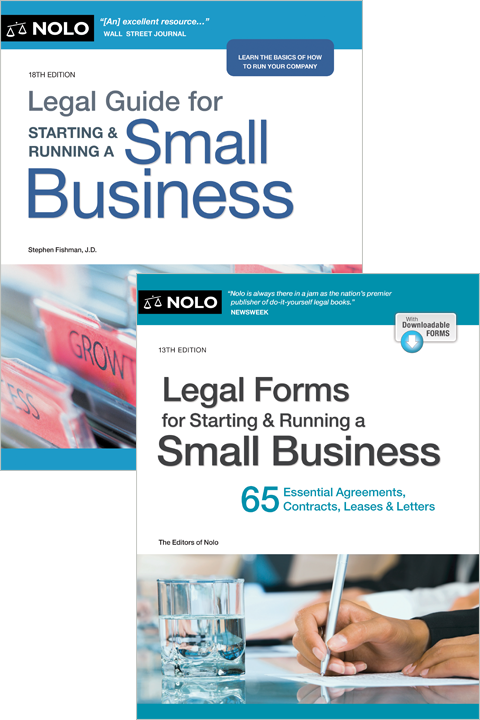Follow this step-by-step guide to collect what you’re owed when a client won’t pay, including sending a demand letter, filing a lawsuit, and hiring a collection agency.
When it comes to getting paid for your work, that old saying, "Hope for the best but prepare for the worst," is good advice. Having collection systems in place before you begin work and deploying them when it's time to collect can help you get the money you're owed.
This article provides tips on how to get your clients to pay you what you're owed, and what steps to take when a client simply won't pay.
Set Clear Expectations From the Start
Lay the foundation for getting paid when you and your client first agree to the assignment. Discuss your fees, invoicing procedures, and payment due dates before you begin the work. Document your terms in a written service agreement.
Choose a Payment Schedule
Set a payment schedule according to the assignment. If you've agreed to be paid upon completion of the assignment, set a due date such as 30 days from the invoice date. If you're working with a new client, consider requiring a deposit or partial payment at the start of the job.
When the work will take months or longer to complete, you should use a monthly payment schedule. A monthly schedule will keep the balance owed from becoming too large and will help you manage your cash flow more effectively.
Don't Let Invoices Pile Up
Send invoices promptly according to the payment schedule you've arranged. Use good invoicing procedures that clearly state payment due dates. Consider including late fees in your service contract so clients know up front that you expect to be paid in a timely fashion.
What to Do When Clients Don't Pay
If you're not paid promptly, don't conclude right off the bat that your client is deliberately trying to avoid paying you. Invoices go unpaid for many reasons.
The bill might get lost in a sea of emails or be misplaced. The person in charge of paying your invoice might be on vacation or trying to juggle many other responsibilities. Companies with cash-flow issues might put your invoice aside, waiting for funds to free up.
A good rule of thumb is to start with a gentle reminder and make your requests incrementally more forceful if necessary. When a payment becomes past due, you should follow these steps:
1. Send a Written Reminder Promptly When You Don't Receive Payment by the Due Date
Resend the invoice with a message that you haven't received payment. You can mark the invoice as "past due," or you can use a message such as, "Did you forget? Your payment is due now."
You don't have an obligation to give your client additional time, but if you're dealing with a large company that needs more time to process payments, set a due date within a week or two. If you don't get paid within the time frame you've set, it's time to move to step two.
2. Send a Debt Collection Letter
A debt collection letter is more formal than a reminder. It includes:
- the date that payment was due
- a time frame for sending payment—typically two weeks
- the methods of payment you accept, and
- a statement about the action you'll take if you don't receive payment.
Your statement describing your next step can be a vague suggestion (such as "to avoid further action"), or a more forceful statement that you'll turn the matter over to a collection agency or initiate legal action. Your choice will depend on the time that's elapsed, the amount owed, and possibly your desire to salvage this client for future business dealings.
3. Make Personal Contact With the Client by Phone or a Face-to-Face Meeting
If you don't receive a response to your reminders and letters, consider calling or meeting with the client to talk through the issue and negotiate a resolution. Begin by contacting the accounts payable or purchasing department or your client contact. If the person you speak with isn't helpful, go up the chain of command, including the president of the company.
Remind the client of the payment terms that everyone agreed to follow. Ask questions that help you understand why you haven't been paid. If the reason is a simple oversight, getting the attention of the company through personal contact might be all you need to do to get paid.
But if you haven't been paid because the company is experiencing financial difficulty, you might want to set up a payment plan or accept a partial payment, It's best to resolve the situation without resorting to more costly and time-consuming actions.
4. Send a Final Demand Letter
If the client still hasn't paid you, send a final demand letter before filing a lawsuit. A final demand is much the same as the debt collection letter described above, but it usually more clearly states that you intend to sue if the client doesn't pay.
You can also hire an attorney to write a final demand letter. The content of the letter should be the same regardless of who writes it, but when the demand comes from an attorney it usually gets more attention and carries more weight.
The cost to have an attorney write a letter is substantially less than what you'd pay if the attorney were to represent you in a lawsuit. Unless you agree otherwise, there's no requirement to retain the attorney if you later decide to sue.
5. Take Legal Action
The simplest and fastest form of legal action you can take is to file a claim in small claims court. Your case should be straightforward: You'll claim that the other side breached your written agreement by not paying you, and you want the judge to award judgment to you for the entire amount owed. Then, if the client still doesn't pay, you can hand the judgment over to a collection agency, garnish the client's wages, or get paid from a bank account.
You don't need an attorney to bring your case. (Some states even prohibit attorneys from representing you, though you can always pay for a consultation.)
But you're also limited in the amount you can claim. The small claims maximum generally ranges from $2,500 to $25,000, depending on the state where you file your claim. If you're owed more than the limit, you can still sue in small claims court if you're willing to give up your right to collect the amount over the state's limit.
If you file a suit in small claims court and your client doesn't show up to dispute it, you'll win by default. A substantial percentage of clients don't contest claims for unpaid fees in court because they know that they owe the money and can't win.
6. File a Civil Lawsuit
If the client owes you substantially more than the small claims court limit for your state, you can bring your lawsuit to the trial court. If you have a simple debt collection case, consider handling the matter yourself and hiring an attorney for the limited purpose of giving you advice on legal points or strategy. If you have a more complicated case—such as a disputed verbal agreement—it might be a good idea to hire an attorney to represent you in court.
But be aware that few collection cases ever go to trial. Usually, the defendant either agrees to settle before trial or fails to show up in court (which gives you a default judgment for the amount owed).
7. Use a Collection Agency to Get Paid
Filing a lawsuit in court will allow you to ask for all the money you're owed. If you're willing to settle for less than the full amount you're owed, you might consider using a collection agency instead.
Collection agencies contact the debtor and exert pressure for payment. The agency will explain (not so subtly) that if the matter isn't settled, the creditor (you) will go to court and obtain a judgment for the entire amount. Then you can collect on that judgment by garnishing wages or placing a lien on the client's property.
Collection agencies typically work on contingency. (You're charged only if they recover money for you.) Agencies usually collect 20% to 80% of the debt owed, and their charges range between 10% and 50% of the amount collected. In general, the smaller the amount of debt, the larger the percentage charged for recovery.
For example, suppose you're owed $5,000 and the collection agency recovers half that amount, or $2,500. The agency's fee is 25%, meaning you'll walk away with 75%. So while the agency recovered $2,500, you'd receive only $1,875.
It can be frustrating to accept anything less than what you're owed. But preparing for and going to court—even when you win—isn't without its costs, including the time and energy diverted from your business. And there's always a chance that you'll lose. In the long run, recovering only a portion of the debt might be the most efficient way to end the dispute and return to doing business.
Additional Do's and Don'ts
How you go about collecting money you're owed might be as important as what you do.
Do be persistent. When it comes to collecting debts, the squeaky wheel usually gets paid first. A client who's struggling financially and has only enough money to pay one creditor will likely pay the one who makes the most fuss.
Do be prompt with follow-up. Uncomfortable as it feels, it's important to conduct all the follow-up steps promptly. It's easier to collect a smaller debt than a larger one, and letting the debt—and late charges—accumulate over months will only make it harder to get paid.
Do be polite and professional. Waiting to be paid is stressful to be sure, but it's important to remember you can catch more flies with honey than with vinegar, as the saying goes. You shouldn't shout, be accusatory or threaten your client. Stick to the facts, be firm, and be professional. You might be thinking, "Why don't you have the common decency to pay me?" But you should say, "I haven't received your payment, and it was due 30 days ago."
Don't keep working. If you're working on a longer project or an ongoing assignment for which you've agreed to be paid monthly or in similar intervals, you should discontinue delivering work after your client misses a payment. Sometimes letting your client know that you've stopped work will be enough to get you paid.
When to Give Up
If your client has gone out of business or vanished from the face of the earth, taking any additional action will likely just waste your time. Instead, you might be able to deduct the loss as a "bad debt" on your tax return. Businesses that sell tangible goods or something similar can usually write off the debt. But the IRS generally doesn't allow these write-offs for service businesses.
If, on the other hand, your client has filed for bankruptcy, you might be able to file a claim with the bankruptcy court for what you're owed. If your client has any money for claims, you can file a proof of claim and potentially get paid some (or sometimes all) of the money you're owed.
Businesses that sell tangible goods or something similar can usually write off the debt. But the IRS generally doesn't allow these write-offs for service businesses.
Contact a Business Attorney
If you've tried to reach out to a client about nonpayment but are unsuccessful, it might be time to talk to a business attorney. They can help you through each stage above, as you need it. You can involve an attorney as soon as or as late as you see fit, and they can help as little or as much as you need.



